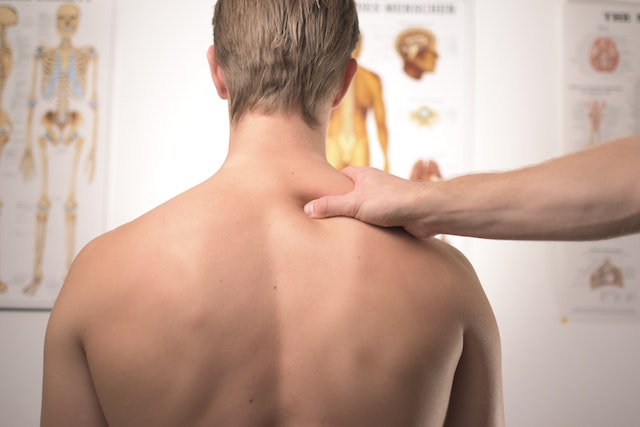Musculoskeletal disorders, known as MSDs, include a number of minor problems that affect all the joints, bones, or muscles in the body. These disorders are very common, especially as a person begins to age. If symptoms are caught early, it is possible to prevent them from increasing in severity, and measures taken to control pain will also be more effective.
Causes and Types of Musculoskeletal Disorders
This condition is generally due to 4 main factors: your age, lifestyle, occupation, and daily activity level. The chance of developing musculoskeletal disorders will increase as you age. Most people start to experience pain in their joints and muscles around the age of 40. The area of pain depends on the type of occupation and the activity level. Those who sit in front of a computer all day can start to have back problems. Poor posture can contribute to back problems. Lifting heavy equipment and physical work can also cause joint and muscle problems.
Some symptoms can affect parts of the body from the neck to the shoulders, back, legs, and knees. The most common warning sign is lower back pain. Other common types include gout, rheumatoid arthritis, fibromyalgia, and tendonitis.
Diagnosis and Treatment of Musculoskeletal Disorders
Other symptoms include stiffness, swelling, and pain in the joints. As soon as you suspect a musculoskeletal disorder, you should visit your doctor. You will then need to undergo a physical test for the doctor to determine if there is any weakness or atrophy. A reflex test and X-rays can be taken to confirm any disorders. In some cases, blood tests may also be done. Once the musculoskeletal disorder is confirmed, you will usually be given some over-the-counter medications. Physiotherapy is also prescribed in some cases. It is very important that you only take these medications if your doctor has approved them for you.
Preventive Measures of Musculoskeletal Disorders
A little work now could help you avoid chronic symptoms, as well as a host of other problems later in life. The best way to prevent this to make the necessary changes in your lifestyle and get rid of bad habits. First of all, start by maintaining the correct posture. Good posture can prevent many back conditions as you age. The thing you can do is learn how to lift weights the right way so that you put the low amount of strain on your back while doing it. Bone and muscle strengthening exercises will also help your body stay strong and fit, lessening the chance of musculoskeletal disorders as you age.
Work-Related Musculoskeletal Disorders (WMSD)
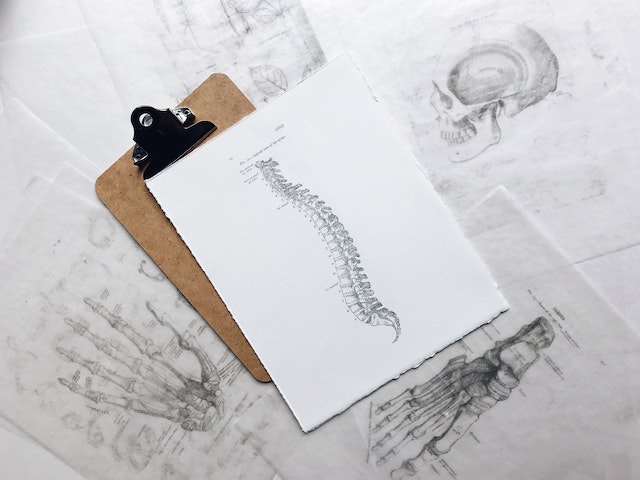
It may be more possible than you think. Any work activity that is repetitive and frequent can cause what are called work-related musculoskeletal disorders or WMSD. WMSDs involve painful disorders of the muscles, tendons, and nerves. They include problems like carpal tunnel syndrome, tendonitis, tight neck syndrome, and much more.
What most workers do not realize is that injuries associated with WMSDs will occur consistently over time. When an area of the body is repeatedly stretched beyond its limits, it will eventually cause pain and discomfort to a person.
Some of the symptoms associated with WMSDs are:
- Pain
- Joint stiffness
- Muscle tension
- “Tingle”
- Numbness
As common as these types of injuries are, there are ways to prevent them or limit the risk of suffering them.
One way to prevent WMSD is through ergonomics. This is the study of the design of equipment and devices so that they adapt to the body and movements of a person in an appropriate way. Ergonomics is used in the workforce to reduce stress and eliminate injuries associated with repetitive tasks, incorrect posture, and overloaded muscles.
Most employers have ergonomics-related programs in place to keep their workforce safe and healthy. This may include sponsoring membership in a health club so your employees can exercise on a regular basis. Studies have shown the regular physical activity can reduce pain, improve function and movement, and also delay the onset of arthritic diseases in patients.
Employers can also ensure that their employees’ workstations are designed for maximum comfort to avoid injury. This may involve redesigning the space so that work-related items are placed closer to the employee to avoid excessive reach. An employee may also need an item like a wrist rest to alleviate any unnecessary discomfort when using a keyboard.
Prevention – Musculoskeletal Disorders
Some other methods to prevent WMSDs include limiting the time an employee performs the repetitive activity. Many involve simpler measures such as reducing overtime, limiting hours, rotating workers to reduce physical stress on the body, or scheduling more regular breaks.
In the event that an employee may be diagnosed with a WMSD, it does not mean that help is not available. Through chiropractic care, a person can not only receive treatment for the specific problem they are having but can also learn more about how to prevent further injury. Chiropractors are trained to assess how stress affects the musculoskeletal system and how to reduce the risk of further trauma.
Musculoskeletal disorders are conditions that affect all the muscles, joints, tendons, ligaments, and nerves of the body. These disorders are work-related and develop over a long period of time. MSDs can progress in stages from mild to severe. In the early stages, there may be pain and fatigue in the affected limb during work. However, this will disappear at night and during days off. The middle stage is when the pain and fatigue will persist through the workday into the evening. At the most severe level, the patient will experience pain, fatigue, and weakness even at rest. It can because of an inability to sleep and perform light tasks. However, not everyone will go through these different stages in the same way.
It is suggested that healthcare workers are at the highest risk of developing these disorders due to the daily tasks associated with work. For example, repeated handling of patients often involves lifting heavy objects when transferring and repositioning patients.
Some high-risk patient handling tasks include:
- Transfer from the toilet to chair
- Move from chair to bed
- Side-to-side repositioning in bed
- Lift a patient to bed
- Reposition a patient in a chair
- Make a bed with a patient in it
Sprains and strains are the frequently reported nature of injuries, with the shoulders and lower back being the most affected body parts. Statistics show that these injuries cause days of absence from work to increase by four percent, which is not only detrimental to the employer but also to the employee. Work-related injuries must be kept to a minimum in all industries, and the healthcare industry is no exception to this.
Patient transfers and lifting devices are essential to control the risk of injury associated with lifting, to transfer, to reposition, or moving patients. This is because manual patient handling is dangerous for both patients and staff.
When using a mechanical lift, it is important that not only is the correct size sling used, but that it is correctly positioned before attempting the lift. This will make the patient feel safe and will also ensure that they have a dignified and comfortable transfer experience.
You have the same right as the patient to work in safe conditions. Therefore, to reduce the risk of TME, the use of a mechanical lift is a must at your workplace.
The Functions of the Musculoskeletal System
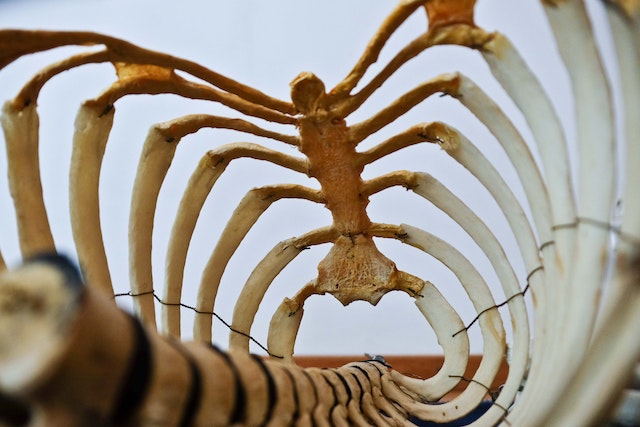
As the name suggests, the musculoskeletal system is the combined organ system that incorporates both the muscular and skeletal systems of a human being. This is what allows the body to move.
One of the large and complex organ systems in our body is the musculoskeletal system. This system refers to the muscular system and the skeletal system, both interconnected physically and in performance.
Obviously, the muscular system is the entire network of muscles, tendons, and cartilage that intertwine, interconnect with each other and with the bones of the body. There are different types of muscles found in the body, for example, smooth muscles and skeletal muscles. Both muscles are part of the musculoskeletal system. Smooth muscle function is involuntary, while skeletal muscles move and contract at will.
The thousands of nerves that reach the muscles allow it to contract. When these contract, they create a pull on the tendons that thus move the different bones of our body, thus creating movement. Nerves also send messages from the somatic nervous system to different muscles. Ligaments are a kind of tissue that connects one bone to the other. It is a fibrous and elastic tissue, which has the ability to stretch to allow the bone joints to move back and forth or in a circular motion.
You must have heard of cartilage too. It is something that is not completely bony or muscular. It is a gel-like connective tissue, found in three different types. One of them is the one that forms our outer year, and another type is present between two ends of the bones to prevent them from rubbing together as in the knees and elbows.
The skeletal system is what the other half of the musculoskeletal system does – Musculoskeletal Disorders.
There are almost 206 bones in total in the body of an adult human being. Some of these are short, some long, some flat, and some uneven. But together, all of these bones give our body structure, provide movement to the body, and support muscles.
Without a frame of bones, our body would not be able to stand, sit, or perform any of the housework the way it does. It protects many of the vital organs like the heart, lungs, and brain. Bones are also our storage area for minerals; calcium and phosphorus are stored in them. The red marrow present in some of them is responsible for replacing old blood cells with new ones, while the yellow marrow stores excess fat, which is used as energy when the body has been without food.
Flexibility Training Benefits the Entire Musculoskeletal System
Flexibility training includes the entire musculoskeletal system, as well as the neuromuscular pathways within the body. The joints and the mechanical properties, including connective tissues and muscle fibers, affect the ability of the joints to move freely. Stretching provides a person with the ability to define the development and movement of their body’s range of motion. All stretching programs are designed to optimize joint mobility and maintain joint stability. Flexibility training must include a consistent and safe application of a variety of movements.
Stretching will reduce lower back pain and the possibility of injury during exercise and movement. It will improve posture and muscle symmetry and limit muscle fatigue. Stretching will also prevent excess muscle soreness after exercise and promote mental relaxation.
Properly stretching is key to overall body strength and mobility. Flexibility should be the main component of every exercise routine as it improves the mind, body, and spirit. Many doctors recommend flexibility training, such as palate exercises, to reduce stress. Flexibility will strengthen your body’s joints (the areas where two or more bones meet).
Flexibility training will strengthen the core muscles of the body within the torso, as well as the joints in the elbows, knees, and hips. If your muscles are tight, it may be due to poor posture. You can adjust your posture by standing tall and keeping your shoulders back and focusing on flexibility training. Flexibility is an important part because it allows your joints to move through their full range of motion. Flexibility is needed to move smoothly and reduce muscle tension. Excess muscle tension can cause injury to the body.
Flexibility training has many benefits, including improved performance, injury reduction, muscle pain reduction, improved posture, reduced low back pain, increased blood and nutrients in tissues, improved coordination, and reduced stress.
Musculoskeletal Disorders (MSD) – An Overview of Preventive Methods

MSDs can range from aches and pains to more serious problems. Doctors recommend that all users who use computers regularly should report signs and symptoms as soon as possible to avoid serious injury or permanent damage. The most commonly noted TME signs and symptoms associated with computer use are as follows:
Signs and symptoms
- Numbness or burning sensation in the hand
- Reduced grip force
- Swelling in the joints
- Pain in wrists, elbows, forearms, neck or back followed by discomfort
- Reduced range of motion in shoulder, neck, or back
- dry, itchy or sore eyes
- blurred or double vision
- Pain or tingling
- Cramps
- Loss of color in affected regions
- Weakness
- Tension stress headaches and related ailments
Types of problems can be caused by any of these factors:
- The user maintains an unnatural posture while using the computer
- If the lumbar support is inappropriate for the user
- The user sits in the same position for a long period of time
- If your workstation configuration is ergonomically poor.
However, if the user experiences any of these symptoms, they should make an assessment of their jobs, as well as the distribution of their job.
It is better to take precautions to avoid musculoskeletal disorders than to treat them after it is affected. Some general precautions include:
- Taking regular breaks from work on your computer – a few minutes at least once an hour
- Alternate work tasks like mixing computer tasks with non-computer tasks alternately to avoid stress
- Regular stretches to relax the body
- Use comfort equipment such as footrests, wrist/palm rests, and document holders if necessary.
- Avoid holding the mouse too tightly – it is always recommended to hold the mouse lightly and click gently.
The monitor must have the following characteristics:
- Your monitor should turn, tilt, and rise; if not, use an adjustable stand, books or blocks to adjust the height
- It should be positioned so that the top line of the monitor is no higher than your eyes or no less than 20 ° below the horizon of your eyes or field of view.
- Make sure it is level with and close to the document holder if you use one.
- Must be 18-24 inches from your face
The keyboard must have the following characteristics:
- Must be removable and adjustable (with legs to adjust the angle)
- You should allow your forearms to be parallel to the floor without having to raise your elbows.
- You should allow your wrists to be in line with your forearms so that your wrists don’t have to be bent up or down.
- Must include enough room to rest your wrists or should include a removable padded wrist rest.
- It should be directly placed in front of the monitor and at the same height as the mouse, trackball, touchpad, or another pointing device.
- Must support the back and have a vertically adjustable independent backrest that returns to its original position and must have an incline adjustment to support the lower back.
- It should allow the user to adjust their height from a seated position.
- It should be adjusted so that the fold of the knee back is slightly higher than the chair tray (use a suitable footrest, if necessary)
- Must be supported by a five-pointed wheelbase
- Make sure it has removable and adjustable armrests.
It should also have a contoured seat with breathable fabric and rounded edges to distribute weight and should be adjustable to the seat base to tilt forward or back.
The table/desk must have the following characteristics:
- Make sure your table/desk provides ample legroom and is height adjustable (preferably)
- It must have enough space to support computer equipment and space for documents.
- Must be at least 900mm deep
- Must have blunt, rounded corners and edges
As mentioned above, make sure your workstation is configured correctly. Typically, it includes the monitor, keyboard, mouse, seat, desk, and where applicable, the footrest, wrist rest, and document holder. This will help prevent musculoskeletal disorders.
What Causes Musculoskeletal Pain?
The causes of musculoskeletal pain are varied. Trauma to an area – jerky movements, car accidents, falls, fractures, sprains, dislocations, and direct blows to the muscle – can also cause musculoskeletal pain. Other causes of pain include postural tension, repetitive movements, overuse, and prolonged immobilization. Changes in posture or poor body mechanics can lead to spinal alignment problems and muscle shortening, causing other muscles to be misused and painful.
Symptoms of musculoskeletal pain?
People with musculoskeletal pain sometimes complain that their whole body hurts. Your muscles may feel strained or overworked. Sometimes the muscles contract or burn.
•Pain
•Fatigue
•Sleep disorders
Also, your doctor can perform diagnostic studies to confirm the diagnosis.
Pain is a sensation in animals that is caused by a real or perceived injury to body tissues and produces physical reactions. The sensation of pain evolved to protect your body from harm by causing us to take certain actions and avoid others. Pain can be called protective, predictive, or simply an annoyance.
We all experience pain to a greater or lesser degree at various times in our lives. Pain is said to be the common reason patients seek medical attention.
Our individual perception of pain can vary at different times, even in response to an identical stimulus.
Treatment of pain depends on the cause and the general health of the affected individual. The main goal of pain management is to return the patient to optimal function. Pain treatments can be classified as medical or non-medical.
Non-medical treatment options for various forms of pain include observation, stretching, exercise, rest, weight reduction, applications of heat or ice, and various alternative treatments including acupuncture, chiropractic, massage, manipulation, electrical stimulation, biofeedback, hypnosis, and surgical procedures.
Medical treatments include three forms of basic pain relievers (analgesics): non-opioid drugs, opioid drugs, and drugs that are used to supplement other pain relievers (adjunctive drugs).
How is musculoskeletal pain diagnosed?
Your doctor conducts a complete physical exam and medical history. Also, your doctor can perform diagnostic studies to confirm the diagnosis.
How is musculoskeletal pain treated?
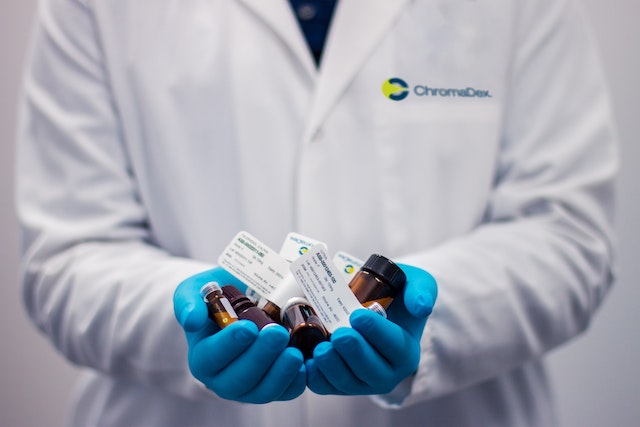
The technology takes credit for bringing light to treatment ideas that were previously unclear or unreliable. Now, medical experts can act with precision to treat ailments no matter how serious, with the maximum guarantee of health recovery. Diagnostic ultrasound is those technologies that are successfully serving the medical field. A variation of this technology, known as musculoskeletal ultrasound, has shown great promise in pain management. Chronic and temporary pain patients who opt for this treatment in a pain clinic vouch for its success. Let’s discuss this new technology and try to learn how musculoskeletal ultrasound can be the best defense against pain.
What is musculoskeletal ultrasound?
This new technology uses a small probe to send and receive sound waves (from the top of the skin) through tissues and bones. It then translates the received sound waves into images to allow medical experts to have a “transparent” experience to facilitate diagnosis. The process uses a gel to facilitate the sending/receiving of sound waves. This medical process is not elusive and does not produce any pain.
Why should I do it?
In addition to being non-invasive, musculoskeletal ultrasound is portable, inexpensive, and safe (non-ionizing radiation). It is a diagnostic tool used by medical experts to investigate any anatomical discrepancies. Its image representations offer an accurate view to medical experts, eliminating uncertainty about the treatment process. Also, your images may indicate sensitive / compromised structures/joints in the body, making pain management easier. Identifying small nerves and tendons through the imaging process makes nerve blocks (to suppress pain) an easy and risk-free job. Even when local anesthesia is injected (into the right nerve) before continuing pain control treatment, the doctor can better manage the situation with this ultrasound technology.
What conditions can be diagnosed with ultrasound for treatment?
Pain can have a million different origins. In the absence of proper identification of an origin, it is difficult to decide which is the correct treatment route. Ultrasound focuses on fast and accurate treatment selection. Pain clinics using this technology can easily identify inflammation in the musculoskeletal system, joints, bursa, tendons, and nerves with success.
Is it better than other treatment options?
Pain management must trace the source of the problem to cure it. CT scans and X-rays are the traditional options for identifying damaged nerves that send pain signals. But the images produced by traditional choices lack clarity and also present the threat of radiation.
On the other hand, musculoskeletal ultrasound offers high-resolution images for precise identification of nerves and is radiation-free. Therefore, patients of any age group, and even pregnant women, can choose this ultrasound to treat joint effusions, tendon tears, and ligament and muscle sprains.
Curing Musculoskeletal Pain: Understanding the Treatment and the Causes
Most of the day-to-day activities trigger the wear and tear of the muscle tissues, which can gradually damage them. Various traumas like muscle damage, sprains, dislocations, accidents, fractures, falls, and jerky movements also result in pain relief. Other problems that can cause musculoskeletal pain include long-term immobilization, overuse of muscles, perpetual movements, and postural strains. Poor body mechanics and/or poor posture stimulate muscle contraction and spinal alignment conditions, causing undue stress on some other muscles.
Doctors often perform a detailed physical examination of the patient and look at their medical history to determine the cause of the pain. Diagnostic studies may also be necessary to confirm the diagnosis.
Pain relief treatments
Various types of mobilization or manual treatments can be used for the recovery of people suffering from spinal alignment problems. These therapies also stimulate the healing process and help reduce pain management. In people who complain of pain relief, for example, due to fibromyalgia, low-dose medications are recommended to improve the body’s availability of norepinephrine and serotonin. These neurotransmitters control the functions of the immune system, sleep, and pain.
Other therapies for musculoskeletal disorders may include:
- Therapeutic massages
- Acupuncture
- Acupressure
- Chiropractic treatment
- Osteopathic Manipulation – A comprehensive set of evaluations and treatments performed to achieve and maintain health.
- Physical therapy
- Biofeedback/relaxation techniques
- Occupational therapy
- Exercises designed to stretch and strengthen muscles
- Injections of anti-inflammatory and anesthetic drugs.
- Doctors often prescribe a drug that has earned a reputation as the best drug for curing musculoskeletal pain. Below are the details.
- Soma for managing pain treatment
Doctors often advise people suffering from musculoskeletal pain to buy Soma and take it for faster relief. Soma is suggested to be used in combination with physical therapy and rest to treat musculoskeletal disorder pain and pain due to other injuries. It is important to precisely follow the dosage guidelines provided by the doctor. The typically prescribed dose of Soma is 250mg – 350mg 3 times a day, before bedtime. Be sure to try other methods of treatment for musculoskeletal disorders, possibly before resorting to medication.
Musculoskeletal Pain Linked To Long Work Hours Can Be Helped With Chiropractic Care

During my 35 years in the practice of chiropractic, I have noticed that people work hard. Whether in a physical construction or factory job, working in healthcare as a nurse, hygienist, technician or health assistant, or sitting long hours at a desk, these activities can have a harmful effect on the body. Many people work long hours and have musculoskeletal pain can receive chiropractic care. With a little foresight and caution, many painful musculoskeletal conditions can be avoided. Prevention is the key!
Just today, I happen to be talking to a 74-year-old retired plumber who was not my patient. He told me that he already had back surgery, open-heart surgery, that he had diabetes causing neuropathy in his feet, and that he had severe arthritis in his knee. He said he had worked from the age of 16 to 60 when he retired. It made me speculate how much better his health would have been if he had been under chiropractic care from the moment his vocation began.
Occupation and Chiropractic Help
I have many patients who have worked for decades in extremely physical jobs and patients who also work for decades in sedentary jobs who have very few health problems. There are several key factors that they signal have helped them maintain good health when others in their professions are in declining health. These factors include getting enough sleep, eating food to fuel your body, not feeding your emotions, and receiving regular chiropractic care. Many of these patients have visited me at least once a month for decades. They don’t come to me for pain or symptoms; they come to keep your spine in alignment and moving properly. This helps keep your back strong and less susceptible to stress and injury.
Chiropractic care is certainly excellent for relieving neck, mid-back, and back pain. However, many people choose to use chiropractic care beyond the initial pain relief phase and continue with regular maintenance care and perform simple stretching and strengthening exercises at home to maintain good health. This is a lot like going to the dentist regularly to keep your teeth healthy or having an annual test of blood to check for potential health problems in the early stages. It is advisable for those who work long hours to receive chiropractic care to minimize musculoskeletal disorder pain that occurs during a lifetime of work.
Understanding Musculoskeletal Pain
Factors that may be critical in causing myofascial pain syndrome may include muscle injury, ongoing stress, both psychological and physical stress on a localized muscle or muscle area, age (MPS is more likely to be diagnosed in middle-aged women, but it is also diagnosed in men), a sedentary lifestyle and/or inactivity can lead to pain at certain trigger points in the muscle, and eventually anxiety and stress. People under high stress often express pain at various trigger points, perhaps due to muscle tension as a result of stress. Some researchers have suggested that tightening or tense muscles associated with stress are a factor.
If the pain persists or worsens, or seems to have no real reason for being there, or appears to be localized, such as trigger points or knots, a specialist doctor should be consulted. Complications of myofascial pain syndrome can include muscle weakness, particularly due to inactivity, as the person suffering from pain is unable or unwilling to test the area of the sore muscle. Also, as noted above, sleep can be a problem, as it is often difficult to relieve pain long enough to fall asleep.
Types of physical pain: Musculoskeletal Disorders
Acute pain can persist for a few seconds, minutes, hours, or days. Alternatively, chronic pain persists for a few months or years.
When our body is in pain, we must listen to it, as this is the way our body communicates. The messages are transmitted through our nerves and our brain.
We have nerves throughout our bodies that extend from our brain and spine to our muscles, skin, and internal organs. By transmitting and accepting electrochemical indicators, it can communicate with our brain. All of our emotions pass through the various areas of our body into our brain due to the electrochemical indicators in our nerves. Whenever our body is not working properly, our nerve transmits the message to our brain.
These nerves run through our spine, which is protected by our vertebra. Since most of our nerves and nerve roots are concentrated in the spine, this makes our back susceptible to pain, which can be very excruciating. Our intervertebral discs, which separate our vertebrae, have nerve endings that compound the problem.
One of the common methods that we adapt to relieve musculoskeletal disorder pain is the use of ice or heating pads. Using this method will make the pain decrease, as the brain does not receive any stimuli that mean pain. However, the pain will recur as this method is only temporary. Since the brain could not receive any messages, the body was not allowed to heal itself either.
Chiropractic Reviewed: Musculoskeletal Disorders
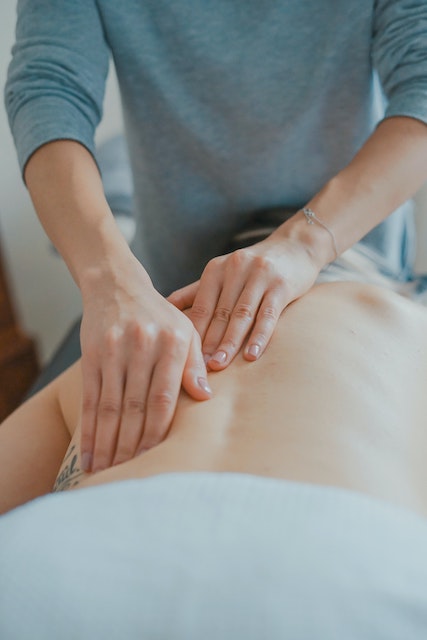
Musculoskeletal pain can be relieved with chiropractic. Restoring and maintaining the proper position of our vertebral joints where our nerves meet is the job of chiropractors. By doing so, the body is allowed to heal the cause of the pain. When our tendons, ligaments, and muscles that surround our spinal joints are sore, we will have inflammation or muscle tremors.
The role of chiropractic is to restore proper nerve flow to allow it to communicate properly with our brain; thus, making our body responds naturally to achieve healing. In order to restore proper alignment of our spine, the chiropractor makes adjustments. Therefore, the body will return to its normal functions, which will result in the elimination of musculoskeletal pain.
Get Rid of Musculoskeletal Pain
The human musculoskeletal system is widely known as the locomotor system. This is an organ system that knows humans’ ability to move the use of the skeletal and muscular system.
This is the system that provides stability, shape, support, and movement to the body. There are many times when a certain person will experience pain in the muscular and skeletal system. The causes of these types of pains vary in many other factors. You feel pain if the muscle tissues are damaged with the wear and tear of daily activities. The best examples of these are car accidents or sudden movements that can cause trauma to a certain area.
Pain can be felt if one experiences fall, direct blows to the muscles, dislocations, sprains, and fractures. The causes of these pains do not end here. It also includes postural tension, prolonged immobilization, overuse, movements. When you practice your body posture, you will surely feel pain due to the misalignment of your spine when you have problems with spinal and muscle problems. Other muscles become distorted and become very painful. These are the causes of these pains.
We could ask ourselves the probable symptoms of musculoskeletal pain. We have found that workaholics often have these pains. These people complain about the pain they have felt in their bodies. They feel that their muscles are overused, or that their muscles have been torn and causing so much pain. Sometimes they may feel the muscles burn and contract. There are symptoms in which a person may experience pain, fatigue, and sleep disturbances. If you feel such pain, you should see your doctor have it checked and examined thoroughly.
The doctor will also run diagnostic studies to confirm your diagnosis of a musculoskeletal disorder.
But if you’ve been in a car accident recently, then maybe the pain you’re feeling now is a whiplash. Chiropractic care, again, can treat whiplash and musculoskeletal disorders. You just have to find the best chiropractor in your area and make an appointment. Like doctors, the chiropractor will track your pain. Chiropractors only use practical treatments to treat pain caused by whiplash. You will simply manipulate or adjust your spine and return it to its normal alignment. This is a safe way to treat body aches without the use of medical treatment that uses chemical medications that can somehow cause ridiculous side effects.
Sources:
- https://eastbrookemedical.com.au/medical-service/musculoskeletal/
- http://www.rmctc.org/wp-content/uploads/2017/04/ITA-Syllabus-17_18.pdf
- https://www.webmd.com/pain-management/qa/what-causes-musculoskeletal-pain
- https://www.medicinenet.com/pain_management_musculoskeletal_pain/article.htm
- https://www.healthmagazine.ae/health-us/musculoskeletal-disorders-msd-an-overview-of-preventive-methods/
- https://www.streetdirectory.com/travel_guide/124855/computers/sort_your_computer_furniture_stay_fitter.html
- https://www.longdom.org/peer-reviewed-journals/musculoskeletal-pain-management-29194.html
- https://frutaplantahealth.lamula.pe/2014/03/20/musculoskeletal-problems-msd-an-summary-of-preventive-methods/frutaplantahealth/
- https://www.dineshbakshi.com/ict/226-igcse-ict/effects-of-using-it/revision-notes/983-effects-of-using-ict-revision-notes?start=2
- https://support.ubteam.co.nz/hc/article_attachments/360001548795/ Streamline3_Users_Guide_v2.1_12102018.pdf
A Guest Writer wrote this article. If you would like to submit a post – please contact us. Thank you!
